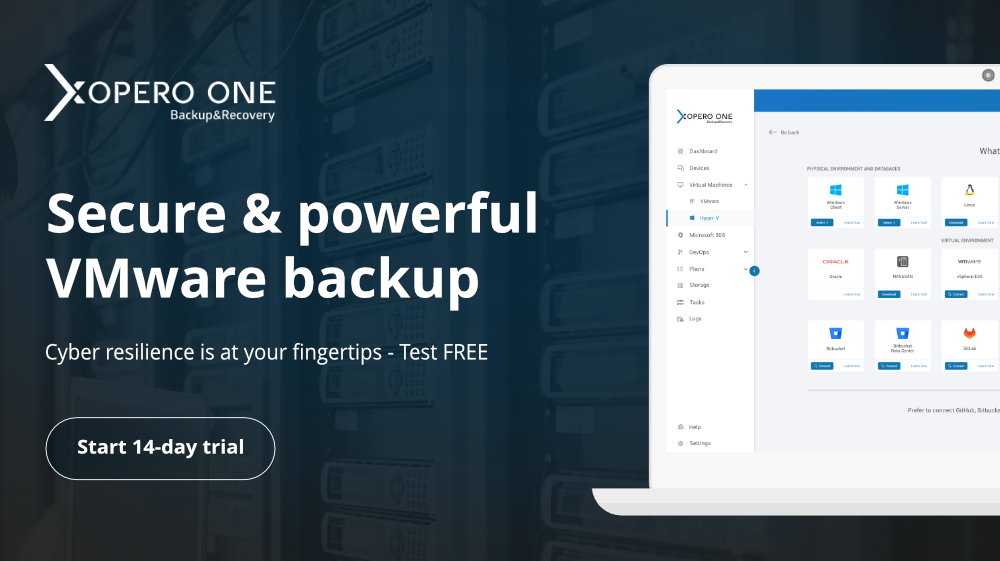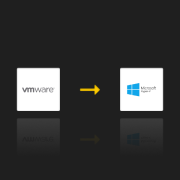
vSphere, how to build your own virtual cloud
We know already that VMware products are currently set as an example by IT specialists, and we have proved why this is the case in a series of entries on the Xopero blog. Since we have already established that we should and want to use the solutions proposed by VMware when virtualizing our environment, now is the time to present examples of such implementations.
Free or paid ESXi?
VMware is a company that approaches virtualized solutions comprehensively. Since it represents such a position, it focuses strongly on the problem of the scalability of solutions. The fact that we can install the hypervisor in the form of ESXi in a free version and get the option to switch to a paid solution at any time by purchasing only licenses is a commendable approach. Thanks to this, we get one product in the form of the ESXi hypervisor, which can be installed both in “home laboratories” and corporations with “unlimited” funds and budget.
It’s worth noting here that the ESXi server with an activated free license is very limited, and, for example, such a server cannot be managed or joined to vCenter. However, one of the main issues with a free license that must be considered and which practically disqualifies the accessible version of ESXi for use in so-called production is the lack of support for vSphere API. This means that no backup software will work, so we are practically unable to back up machines and data located on such an ESXi server. The free license also does not allow you to have more than two physical CPUs of the ESXi server, and you cannot allocate more than eight virtual CPUs to one machine.
vSphere, together with the vCenter server, is already a whole packet and that means that it’s the comprehensive solution proposed by VMware to virtualize entire IT environments. This product not only allows us to create local clouds but also gives us the ability to create virtual machines alongside Kubernetes-based containers in one sitting. An essential feature of VMware vSphere is developing our infrastructure to a hybrid form, combining with commercial clouds. It is worth noting here that the low-level element of this puzzle in the case of vSphere-based solutions is the ESXi hypervisor.
VMware and backup?
On the pages of this blog, I try to present VMware’s products and make it clear that the snapshot technology itself is not and cannot be called a backup. VMware focuses on what it has been doing best for years, i.e., virtualized IT infrastructure, hybrid solutions, etc. Therefore, every company that uses VMware virtualization solutions should secure its virtual machines and data on them in the form of a comprehensive backup solution for such environments. Xopero meets these expectations with our VMware backup product. This solution will allow you to ensure that the data of your company and your customers are always safe, transparent, and intuitive. We have already seen that while the accessible version of the hypervisor from VMware offers many possibilities if we want to protect ourselves adequately, our customers, and their data, we should switch to a paid license. Only in this case can we use the API, thanks to which external software will be able to perform a backup.
Backup – how it’s done?
VMware made sure that it was possible to communicate with the hypervisor in several ways. From the point of view of backup and security of our data, the most important for us is the API, which is used for data exchange and for triggering tasks and processes on the ESXi itself. Thanks to this, external software can connect to our virtual infrastructure and perform a backup operation. An example of such a process can be divided into several stages. The first is to establish communication with the server via API. The next step is to command ESXi to take a snapshot of the virtual machine. The API informs about the successive creation of the snapshot. Only at this point is the actual data downloaded from the server. After the data copying process is completed, the command to delete the snapshot created for the backup is issued. Before the last step triggers the given virtual machine’s consolidation task, the final step is closing the connection. As you can see, the API proposed by VMware is a requirement, not an addition to the backup process.






